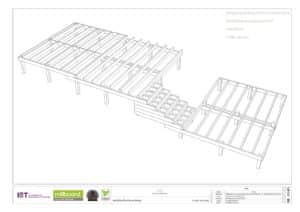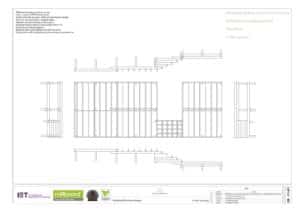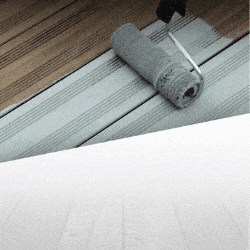How to choose a Professional Decking Designer
How to choose a Professional Decking Designer
Choosing a professional decking designer is vital to the success of your new deck. It will ensure it meets the right standard for the contractor to build it. Professional decking designers are specialists in exactly that, they only concern themselves with decking. Some Landscaping companies specialise in decking design and installation too.
Your decking designer should be conversant with all decking materials from all manufacturers. Their designs may include softwood, hardwood, modified and composite decking materials.
Your professional decking designer should, at the very least, have the following:
- A website with a portfolio of their own work.
- Have a registered business.
- Have Professional Indemnity insurance.
Even better if they also have the following:
- Professional Association membership as a designer such as the APL (Association of Professional Landscapers)
- Professional training, there is the TASK Landscaping Training Academy’s for such.
- Prove understanding of EN 1995-1-1: Design of Timber Structures to EuroCode 5.
Who should you trust to Design your deck?
What Association are they a professional member of? it’s certainly worth the question. If they are members of the “Designer category” Association of Professional Landscapers (APL) they are actually vetted on-site by a real person from a third-party source and are the only Landscaping association to do so. They also require no less than 6 recommendations from previous clients spanning at least 2 years… It’s not easy to become a member so you should hold this in high regard when choosing your Pro installer.
The APL has a 15-year code of practice guide specification for decking construction. Further, this is used in the TASK Landscaping Academy and is being adopted by World Skills UK.
Qualified, experienced, insured and proven track record with portfolio. Click here to read more about choosing a deck builder.
Take a look at their feedback from genuine sources. There are many online “rate my contractor” style sites that purport the checking of tradespersons … We certainly wouldn’t recommend these!
What should be included in the design service.
There is a simple process to enable the client to understand exactly what is involved.
- Initial meet and greet.
- Acceptance of design fees
- Site survey and client brief
- Concept drawings
- Second meeting -Report back with concept findings, refine any questions.
- Detailed drawings in plan, side, elevation and Iso
- Specification
- Final presentation and sign off.
Your design should state the performance of the structure, how much weight of people can it support. This is usually in kN/sq. m (1.5kN for domestic and at least 4kN for commercial)
Quality of installation, such as butt joints or mitres for corners, specialist detail, sanding and oiling. If countersunk holes are expected, then this should be listed too.
If there is excavation, it should state what depth and volumes of waste to be removed.
It should refer to a specification.
“If there is nothing written down then there is very little you have as protection if the contractor builds you something that doesn’t match the design and specification or meet your expectations.”
Investing in your decking design
You will certainly be using, or at least seeing your decking most days of the week. It should make you happy each and every time you use it. It should also be something that shouldn’t rot and last at least 15 years (Unless warranted for more).
There are some composite materials that are warranted for 25 years. Why compromise on a “cheap” substructure that will last for far less… It is best to get your decking substructure designed to meet the performance you need, and it should match the longevity or warranty of your decking.
Trex® and Millboard® are the market leaders for composite decking in the UK, with warrantees between 25 and 50 years.
Accoya® and Kebony® are the leading Modified timber decking manufacturers which carry 50 years and 30 years respectively.
Hardwoods are expensive and becoming less popular due to their unsustainable credentials. There’s no such thing as cheap hardwood and they cost less for a reason…
Softwoods are perfect for a decking platform, do be sure to ask for a minimum UC3 (Use Class) treatment in accordance with BS8417. This is because the service life should serve 30 years for the timbers, not in contact with the ground, if the timber is in contact with or physically “IN” the ground it should be treated to UC4.
To protect your investment, you should consider HDPE (Plastic) or steel posts because these will never rot…
What questions should I ask my designer?
Having read this guide on how to choose a professional decking designer you should gather your questions from the information above.
You may ask your designer about who should build my deck… or you could look here
Your decking is an investment that you will rely upon for years.






